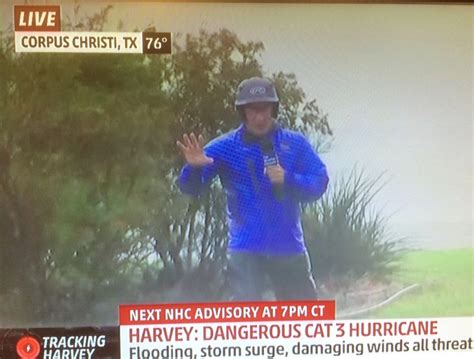
A German Shepherd’s protective instincts kicked into high gear in Yellowstone National Park when it broke free from its owners and chased after a wolf, leading to a tense standoff captured on video. The incident, which occurred recently and was shared widely on social media, highlights the unpredictable nature of wildlife encounters and the importance of keeping pets under control in national parks.
German Shepherd’s Bold Encounter with Wolf in Yellowstone Sparks Debate on Park Safety
Yellowstone National Park witnessed a dramatic display of canine courage – or perhaps foolhardiness – when a German Shepherd, off-leash and unrestrained, confronted a wolf. The incident, caught on camera and rapidly circulating online, has ignited discussions about responsible pet ownership within protected wildlife areas and the potential dangers of such encounters.
The video footage depicts the German Shepherd initially restrained by its owners, but subsequently breaking free and bolting toward a wolf foraging in a meadow. The dog gives chase, closing the distance between itself and the wild predator at an alarming rate. The wolf, initially seemingly unconcerned, is eventually forced to react, turning to face the oncoming canine.
Tense moments followed as the two animals faced off, the shepherd barking aggressively while the wolf maintained its ground, assessing the situation. Park visitors watched with bated breath, anticipating a potentially violent confrontation. The dog’s owners frantically called for their pet, their voices echoing across the open landscape.
Ultimately, the German Shepherd heeded its owners’ calls and returned to them, narrowly averting a potentially harmful, or even fatal, encounter with the wolf. The video concludes with the dog being leashed and the owners quickly departing the area.
The incident serves as a stark reminder of the inherent risks involved in bringing domestic animals into wild environments. Yellowstone National Park, home to a diverse array of wildlife, including wolves, bears, bison, and elk, presents numerous potential hazards for unsupervised pets. Park regulations mandate that all pets must be kept on a leash no longer than six feet and under physical control at all times.
According to the National Park Service (NPS), these regulations are in place for the safety of both the animals and the visitors. “Pets may harass or be harassed by wildlife,” the NPS website states. “Even the scent of a pet can alarm wildlife and cause them to flee, disrupting their natural behaviors.”
The confrontation between the German Shepherd and the wolf underscores the potential consequences of disregarding these regulations. Had the wolf chosen to attack, the outcome could have been devastating for the dog. Conversely, the dog’s aggressive behavior could have provoked the wolf, potentially leading to an attack on nearby visitors.
The video has sparked a heated debate online, with many criticizing the dog owners for their irresponsible behavior. Commenters have expressed concern about the safety of the dog, the wolf, and other visitors to the park. Some have even called for stricter enforcement of park regulations regarding pets.
Wildlife experts emphasize that wolves are apex predators and should be treated with respect and caution. While wolves typically avoid direct confrontations with humans, they are highly protective of their territory and young. An unleashed dog encroaching on a wolf’s space can easily trigger a defensive response.
Beyond the immediate danger of a physical altercation, such encounters can also have broader ecological consequences. Chasing or harassing wildlife can disrupt their feeding patterns, breeding cycles, and overall health. In extreme cases, it can even lead to habituation, where animals become accustomed to human presence and lose their natural fear, making them more vulnerable to poaching or other threats.
Yellowstone National Park officials have not yet commented specifically on the incident involving the German Shepherd and the wolf. However, they routinely remind visitors of the importance of following park regulations and practicing responsible wildlife viewing.
The NPS website provides detailed information on pet policies, wildlife safety, and other important guidelines for visiting Yellowstone National Park. Visitors are encouraged to familiarize themselves with these resources before entering the park.
This incident serves as a case study in the complex relationship between humans, domestic animals, and wildlife in protected areas. It highlights the need for responsible pet ownership, adherence to park regulations, and a deep understanding of the potential risks involved in venturing into wild environments. The dramatic confrontation between the German Shepherd and the wolf offers a valuable lesson for all visitors to Yellowstone National Park and other similar destinations. The choices made by pet owners directly impact not only their animals, but also the delicate balance of the natural world.
Expanding on the Context of Wolf Encounters in Yellowstone
The encounter between the German Shepherd and the wolf in Yellowstone is not an isolated incident, but rather part of a larger pattern of human-wildlife interactions that occur regularly in the park. Yellowstone National Park, encompassing nearly 3,500 square miles, provides habitat for a significant population of wolves, which were reintroduced to the park in 1995 after being extirpated in the early 20th century.
The reintroduction of wolves has been a remarkable success story, but it has also presented new challenges for park management. As the wolf population has grown, so too has the potential for encounters with humans and domestic animals.
Wolves typically prey on elk, deer, bison, and other large ungulates. However, they are opportunistic predators and will also scavenge on carrion or prey on smaller animals, including domestic pets if the opportunity arises.
The risk of wolf encounters is particularly high in areas where wolves are known to frequent, such as the Lamar Valley and the Hayden Valley. These areas are popular destinations for wildlife viewing, but they also require extra vigilance on the part of visitors.
Park rangers routinely patrol these areas to monitor wolf activity and educate visitors about wolf safety. They also respond to reports of wolf sightings or encounters, providing guidance and assistance as needed.
In addition to the direct threat of predation, wolves can also pose a risk to domestic animals through the transmission of diseases. Wolves can carry rabies, distemper, parvovirus, and other diseases that can be fatal to dogs.
For this reason, it is crucial to ensure that pets are vaccinated and properly protected against these diseases before bringing them into Yellowstone National Park. It’s also important to keep pets away from areas where wolves are known to be active, and to avoid contact with wolf scat or carcasses.
The presence of wolves in Yellowstone National Park is a valuable asset to the ecosystem, but it also requires a degree of responsibility on the part of visitors. By following park regulations, practicing responsible wildlife viewing, and taking precautions to protect their pets, visitors can help minimize the risk of wolf encounters and ensure the safety of both themselves and the animals.
The reintroduction of wolves to Yellowstone has also had a significant impact on the park’s ecosystem. Wolves are a keystone species, meaning that their presence has a disproportionately large effect on the structure and function of the ecosystem.
By preying on elk and other ungulates, wolves help to control their populations and prevent overgrazing. This, in turn, allows vegetation to recover, which benefits a wide range of other species, including birds, insects, and small mammals.
Wolves also influence the behavior of their prey. Elk, for example, tend to avoid areas where wolves are present, which allows vegetation in those areas to thrive. This is known as a “trophic cascade,” where the effects of a top predator ripple down through the food web.
The reintroduction of wolves to Yellowstone has been a controversial issue, particularly among ranchers who fear that wolves will prey on their livestock. However, research has shown that wolves actually have a relatively small impact on livestock populations.
In most cases, wolves prefer to prey on wild ungulates, and only occasionally attack livestock. However, when wolves do attack livestock, it can be a significant economic loss for ranchers.
To mitigate the risk of wolf-livestock conflicts, park managers and wildlife officials have implemented a number of measures, including compensation programs for ranchers who lose livestock to wolves, and non-lethal methods of deterring wolves from attacking livestock.
These measures have helped to reduce the incidence of wolf-livestock conflicts and have improved relations between ranchers and wolf advocates.
The story of wolves in Yellowstone is a complex and evolving one, but it is also a testament to the power of ecological restoration. By restoring a keystone species to its natural habitat, we can help to restore the health and resilience of entire ecosystems.
Legal Ramifications and Park Regulations
The incident involving the German Shepherd and the wolf could potentially have legal ramifications for the dog’s owners. Yellowstone National Park, like all national parks, has specific regulations in place to protect wildlife and ensure visitor safety. Violating these regulations can result in fines, citations, and even criminal charges in certain cases.
The most relevant regulation in this instance is the park’s leash law, which requires that all pets be kept on a leash no longer than six feet and under physical control at all times. The purpose of this regulation is to prevent pets from harassing or injuring wildlife, as well as to protect pets from being injured by wildlife.
In this case, the dog was clearly off-leash and not under physical control when it chased after the wolf. This constitutes a violation of the park’s leash law, and the owners could be subject to a fine. The amount of the fine would depend on the specific circumstances of the incident, as well as the park’s fee schedule.
In addition to the leash law violation, the owners could also be charged with other offenses, depending on the severity of the incident. For example, if the dog had actually attacked the wolf, the owners could be charged with harming wildlife. Or, if the dog’s actions had caused a disturbance to other visitors, the owners could be charged with disorderly conduct.
Park rangers have the authority to issue citations and make arrests for violations of park regulations. They also have the discretion to decide whether to pursue criminal charges in certain cases.
The decision of whether to pursue charges would likely depend on a number of factors, including the severity of the incident, the owners’ history of compliance with park regulations, and the availability of evidence.
In addition to the potential for legal penalties, the owners could also face civil liability if the dog had injured someone or caused damage to property. For example, if the dog had bitten another visitor, the owners could be sued for damages.
Even if the owners are not charged with any criminal offenses, they could still be held liable for any damages caused by their dog.
It is important for all visitors to Yellowstone National Park to be aware of the park’s regulations and to comply with them at all times. Failure to do so can result in legal penalties, as well as potentially endangering themselves and others.
The National Park Service takes violations of park regulations seriously, and they will not hesitate to take action against those who disregard the rules. The purpose of these regulations is to protect the park’s natural resources and to ensure the safety of all visitors.
The Ethical Considerations of Bringing Pets into Wildlife Areas
Beyond the legal and practical considerations, there are also ethical considerations to consider when bringing pets into wildlife areas like Yellowstone National Park.
One of the primary ethical concerns is the potential for pets to disrupt the natural behavior of wildlife. As mentioned earlier, even the scent of a pet can alarm wildlife and cause them to flee, disrupting their feeding patterns, breeding cycles, and overall health.
In addition, pets can introduce diseases to wildlife populations. Dogs, in particular, can carry diseases that can be fatal to wolves, coyotes, and other wild canids.
For these reasons, many wildlife advocates argue that pets should not be allowed in national parks or other protected areas. They believe that the potential risks to wildlife outweigh the benefits of allowing pets to accompany their owners.
On the other hand, many pet owners argue that they have a right to bring their pets with them on outdoor adventures. They believe that responsible pet owners can minimize the risks to wildlife by keeping their pets on a leash and under control at all times.
They also argue that excluding pets from national parks would be discriminatory and would limit access to these areas for people with disabilities who rely on service animals.
Ultimately, the decision of whether to bring a pet into a wildlife area is a personal one. However, it is important to carefully weigh the potential risks and benefits before making a decision.
If you do decide to bring a pet into a wildlife area, it is crucial to be a responsible pet owner. This means keeping your pet on a leash at all times, cleaning up after your pet, and avoiding contact with wildlife.
It also means being aware of the potential risks to your pet and taking steps to protect them from harm. For example, you should ensure that your pet is vaccinated against rabies and other diseases, and you should avoid areas where wolves or other predators are known to be active.
By being a responsible pet owner, you can help to minimize the risks to wildlife and ensure that your pet has a safe and enjoyable experience in the great outdoors.
Alternatives to Bringing Pets to Yellowstone
For those who want to experience the beauty of Yellowstone without bringing their pets and potentially risking harm to both the animal and the park’s ecosystem, several alternatives exist.
- Pet Sitting/Boarding: Before embarking on a trip to Yellowstone, consider leaving your pet in the care of a trusted pet sitter or boarding facility. This ensures that your pet is safe and well-cared for while you enjoy the park.
- Pet-Friendly Accommodations Outside the Park: Many hotels and lodging options just outside the boundaries of Yellowstone National Park are pet-friendly. This allows you to keep your pet close while still being able to explore the park during the day.
- Designated Pet Areas: While pets are restricted in many areas of Yellowstone, some designated pet areas exist, often near developed areas or campgrounds. Check with the National Park Service for specific locations.
- Alternative Vacation Destinations: Consider exploring other destinations that are more welcoming to pets. Numerous national forests and state parks offer pet-friendly trails and camping areas.
By considering these alternatives, pet owners can make responsible choices that prioritize both their pet’s well-being and the preservation of Yellowstone’s natural environment.
Frequently Asked Questions (FAQ)
1. What are the specific regulations regarding pets in Yellowstone National Park?
Pets in Yellowstone National Park are required to be kept on a leash no longer than six feet and under physical control at all times. They are generally only allowed in developed areas, such as parking lots, campgrounds, and near roadways. Pets are prohibited on trails, in the backcountry, and in thermal areas. Pet waste must be properly disposed of.
2. What are the potential dangers of bringing pets to Yellowstone National Park?
Pets can be harassed or injured by wildlife, including wolves, bears, bison, and coyotes. They can also disrupt the natural behavior of wildlife, transmit diseases, and be exposed to extreme temperatures and other environmental hazards. Additionally, unleashed pets could trigger a dangerous encounter with predators, putting both the pet and nearby humans at risk.
3. What should I do if I encounter a wolf while visiting Yellowstone National Park?
If you encounter a wolf, maintain a safe distance and observe it from afar. Never approach or attempt to feed a wolf. If the wolf approaches you, make yourself look large, shout loudly, and slowly back away. Report any aggressive wolf behavior to park rangers immediately.
4. What are the penalties for violating pet regulations in Yellowstone National Park?
Violating pet regulations in Yellowstone National Park can result in fines, citations, and even criminal charges in certain cases. The specific penalties will depend on the nature and severity of the violation. Park rangers have the authority to enforce these regulations and take appropriate action.
5. Are there any exceptions to the pet regulations in Yellowstone National Park for service animals?
Yes, service animals are generally allowed in areas where pets are prohibited, provided they are properly trained and under the control of their handlers. However, even service animals must be kept on a leash and under physical control at all times. Handlers should be prepared to provide documentation verifying the service animal’s training and purpose.
The incident involving the German Shepherd and the wolf serves as a powerful reminder of the importance of responsible pet ownership and adherence to park regulations. By understanding the potential risks and taking appropriate precautions, visitors can help ensure the safety of both themselves, their pets, and the remarkable wildlife that calls Yellowstone National Park home.









